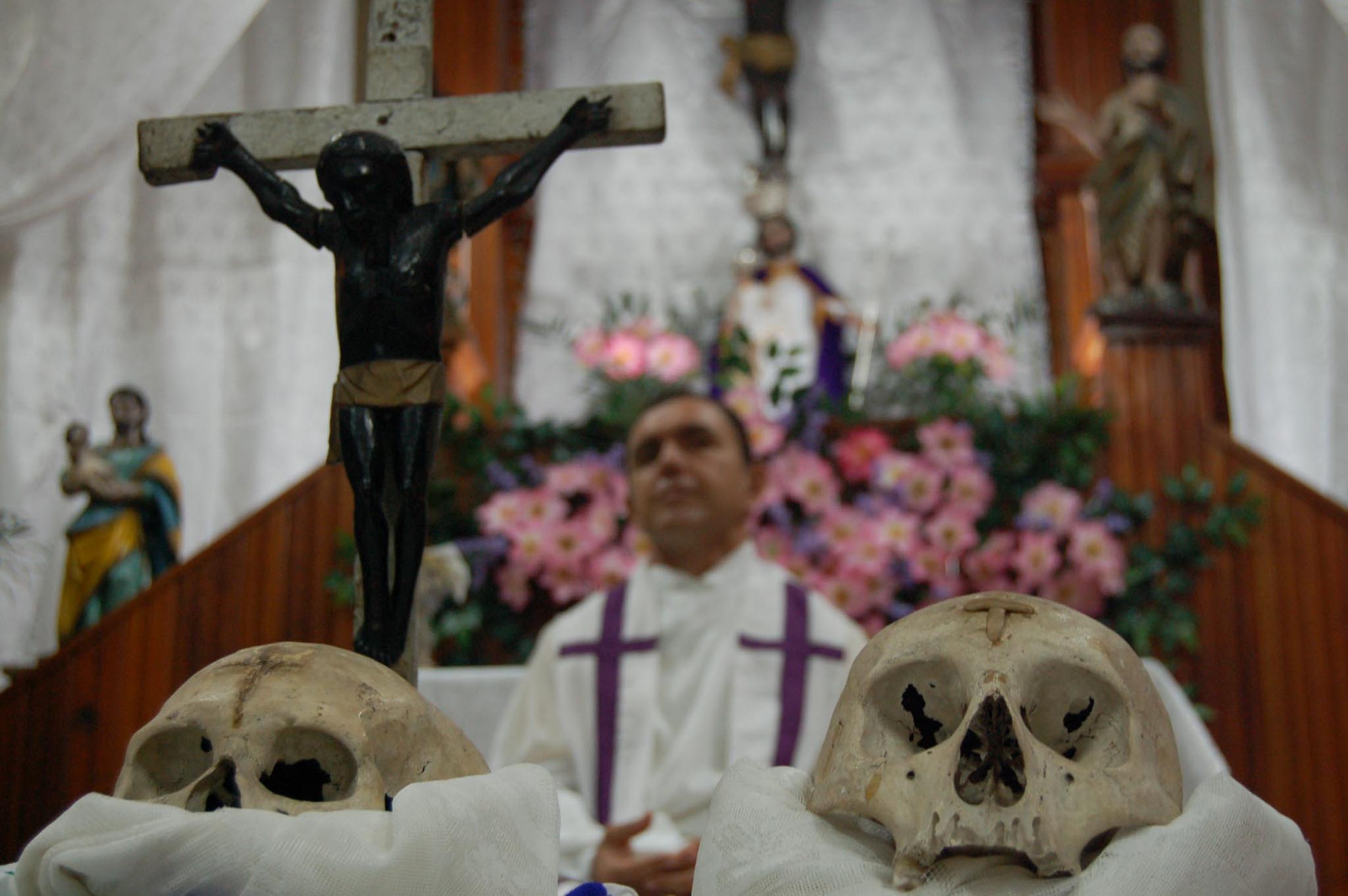The Procession of the skulls
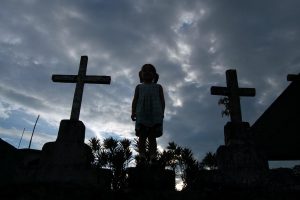
A girl plays between two crosses in the San José Petén cemetery.
San José is a small town in Petén, located about 20 minutes by car from the Isla de Flores. Quiet and welcoming, its entrance is characterized by a beautiful beach on the shore of Lake Petén Itzá, with a pier that offers a spectacular view of the landscape. It is also a town with an ancient, mysterious and mystical tradition of the Day of the Dead: the Procession of the Skull.
Walking around town doesn’t take long. In a ten minute walk you can reach the cemetery. As is tradition on this date, several families are seen fixing and painting the graves of their loved ones while some children played around the cemetery. I saw a girl that was playing among some crosses when she saw me and posed for some photographs, then her mother called her because it was almost 7 pm, time to go to mass, the mass of the skulls.
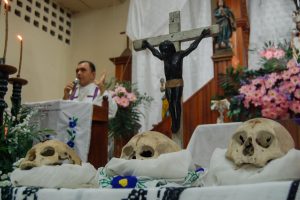
Celebration of mass in San José Petén.
A tradition of thousands of years
In the church there were already many patrons and some tourists, who were intrigued by this tradition. At the altar of the church, a three-tiered cabinet caught my eye. In it were three skulls, surrounded by an atmosphere of respect and devotion. Some children, who were the acolytes of the parish, took the skulls out of the closet and arranged them one next to the other on a table in front of the altar.
People began to approach them. Some prayed and did the sign of the cross across their face while others, several of them children from the families all over the town and abroad, kissed them. That was when I understood the importance of both the ritual and the skulls themselves: they meant a lot to the town and its inhabitants. According to legend, the skulls belong to the founding ancestors of the town.
The three skulls were of three ancient leaders of the Maya Itza ethnic group, who inhabited the area prior to the arrival of the Spanish conquistadors. This part of Petén was not conquered until the second half of the 17th century.
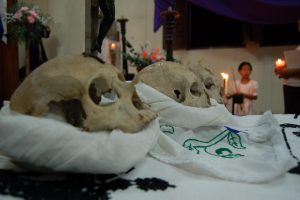
People devoted to the skulls, light candles and pray, during the celebration of mass.
A message of union and memory
In his annual message, the priest mentions the importance of respecting all beliefs, especially when these are fused in the Guatemalan syncretism. Fusion of two cultures that at first collided, and then gradually came together, to fuse in one.
After the traditional mass on October 31, one of the skulls goes out in procession through the streets of San José, visiting the houses of those who previously requested them.
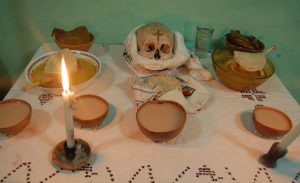
Celebration at houses with traditional food, in San José Petén.
In each house, the inhabitants had already prepared an altar in the room with religious images, food (chicken broths and kak-ik), typical dishes such as ixpazáa and ixpelón buns and squash sweets. The skull is placed on the table turned into an altar, at the living room and the owners of the house and the assistants pray a novena (A catholic prayer) to it.
The nights of November 1 and 2 see how this ritual is repeated in almost every house in San José. Children, youth and adults accompany, pray and kiss the skull that walks through the streets of the town. It is, without a doubt, one of the most joyful and spectacular traditions for this Day of the Dead.
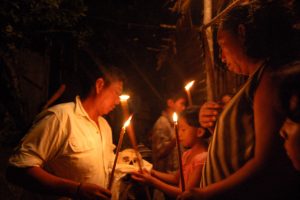
A parishioner walks with the skull, and allows devotees to kiss or touch it in San José Petén.
This year, due to the emergency of the COVID-19 pandemic, the celebration will be different. The traditional mass will be held only with only the 12 people who will have the turn to receive the skulls, while families will be able to celebrate from their homes, and the walk all over town, where the skull is taken from house to house, will not take place as a safety measure.
